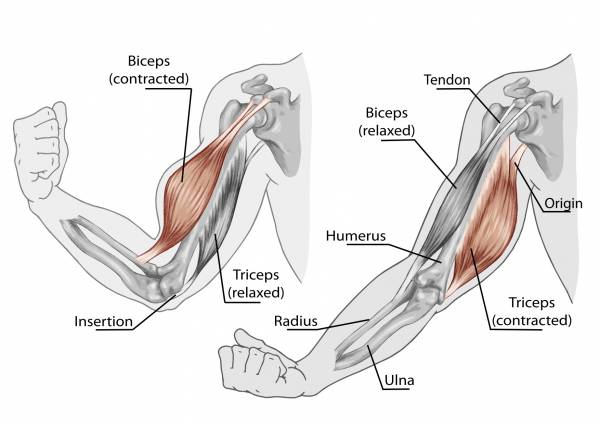Biceps Tendinitis
Anatomy of Biceps Tendon:
The upper end of the Biceps Muscle has two Tendons that are attached to the bones in the Shoulder. The long head is attached to the top of the Shoulder Socket (glenoid). The short head is attached to a bump on the Shoulder blade called the coracoid process.
The long head of the Biceps Tendon rises from the supraglenoid tubercle and the superior glenoid labrum. The proximal portion of the long head of the Biceps Tendon is extrasynovial but intra-articular. The Tendon travels obliquely inside the Shoulder Joint, across the humeral head anteriorly, and exits the joint within the Bicipital Groove of the humeral head beneath the transverse humeral ligament. The Bicipital Groove is defined by the greater Tuberosity (lateral) and the lesser Tuberosity (medial). The Biceps Tendon is contained in the rotator interval, a triangular area between the subscapularis and supraspinatus tendons at the Shoulder. The rotator interval is responsible for keeping the biceps tendon in its correct location. As the rotator interval is usually indistinguishable from the rotator cuff and capsule, lesions of the Biceps Tendon are usually accompanied by lesions of the rotator cuff.

